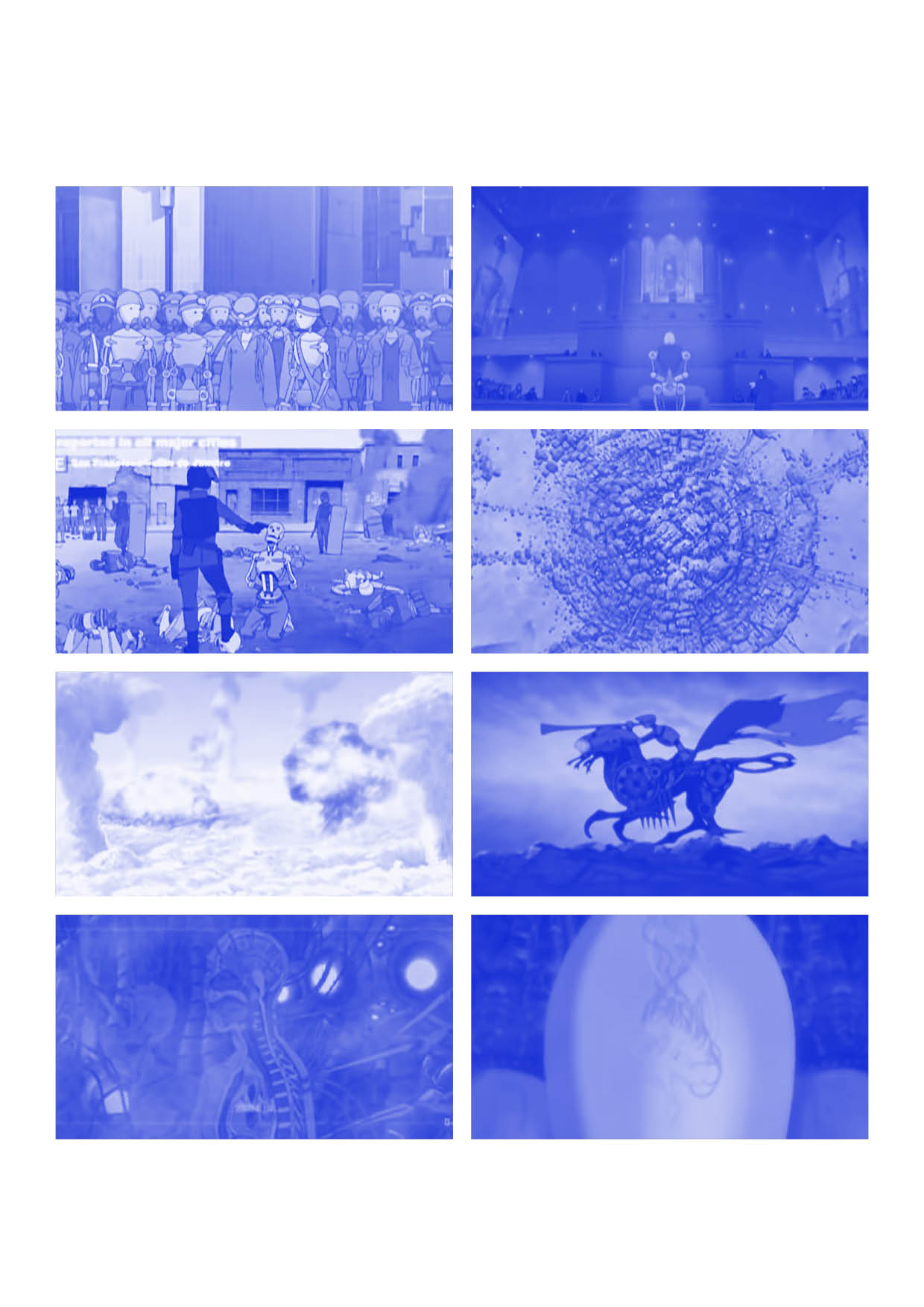
Cyberpunk
Failure of a system, High-Tech, Consumption, Object, Automation, Technology, Economy, Culture, Mosaic
As a cinematic subgenre of science fiction, Cyberpunk merges High-tech and Low-life in a dystopian landscape of the near future with recurrent themes such as artificial intelligence and cybernetics, portrayed in an atmosphere of radical social changes. Based in the new wave science fiction of the 60s, where writers like Philip K Dick, Roger Zelazny and John Brunner amongst others, would avoid the utopian vision of early works while focusing on the subjects of drugs, technology and sexual revolution. The term Cyberpunk was first coined by author Bruce Bethke in 1983 with his homonymous publication for Sci-fi Magazine Amazing Stories. Since then, comics and novels like judge dredd (1977) and Neuromancer (1984) has strengthened the genre and influenced punk subculture and hacker culture. In 1982 Japanese Cyberpunk adapts the genre to anime, a style characteristic for its extreme expression, colourful graphics and fantasy themes.1
Cyberpunk takes automation to the extreme, it unveils the dangers of a decaying society, misused resources and critical repercussions. Tokyo is a clear source of inspiration. movies like Akita (1982), Blade Runner (1982) and The Matrix Trilogy (1999-2003) take elements of its culture and dramatizes them in a post-industrial scenery of Film Noir inspiration, in an oversized cityscape of skyscrapers and dense streets. Maybe it’s the neon lights, the high rises, the density, the cutting-edge technology or their cultural obsession with anime and robotics that makes Tokyo so involved with the genre.2
The second Renaissance, a short from the animated prequel Animatrix (2003) is a sample of Cyberpunk Anime which encompasses the social anxiety of robotics and Artificial Intelligence, overviewing topics such as job-stealing robots, AI, Robot Rights, Robot Wars, Post-human cities and a new source of energy. Watch as humans fail to recognize the limits of automation and Artificial intelligence in search for efficiency and economic growth.3
1. Graham J Murphy and Lars Schmeink, Cyberpunk and Visual Culture, 2017
2. Alex Spencer, what is Cyberpunk, Polygon.com, 2018
3. Mahiro Maeda, The Animatrix: The Second Renaissance, 2003
Failure of a system, High-Tech, Consumption, Object, Automation, Technology, Economy, Culture, Mosaic
As a cinematic subgenre of science fiction, Cyberpunk merges High-tech and Low-life in a dystopian landscape of the near future with recurrent themes such as artificial intelligence and cybernetics, portrayed in an atmosphere of radical social changes. Based in the new wave science fiction of the 60s, where writers like Philip K Dick, Roger Zelazny and John Brunner amongst others, would avoid the utopian vision of early works while focusing on the subjects of drugs, technology and sexual revolution. The term Cyberpunk was first coined by author Bruce Bethke in 1983 with his homonymous publication for Sci-fi Magazine Amazing Stories. Since then, comics and novels like judge dredd (1977) and Neuromancer (1984) has strengthened the genre and influenced punk subculture and hacker culture. In 1982 Japanese Cyberpunk adapts the genre to anime, a style characteristic for its extreme expression, colourful graphics and fantasy themes.1
Cyberpunk takes automation to the extreme, it unveils the dangers of a decaying society, misused resources and critical repercussions. Tokyo is a clear source of inspiration. movies like Akita (1982), Blade Runner (1982) and The Matrix Trilogy (1999-2003) take elements of its culture and dramatizes them in a post-industrial scenery of Film Noir inspiration, in an oversized cityscape of skyscrapers and dense streets. Maybe it’s the neon lights, the high rises, the density, the cutting-edge technology or their cultural obsession with anime and robotics that makes Tokyo so involved with the genre.2
The second Renaissance, a short from the animated prequel Animatrix (2003) is a sample of Cyberpunk Anime which encompasses the social anxiety of robotics and Artificial Intelligence, overviewing topics such as job-stealing robots, AI, Robot Rights, Robot Wars, Post-human cities and a new source of energy. Watch as humans fail to recognize the limits of automation and Artificial intelligence in search for efficiency and economic growth.3
1. Graham J Murphy and Lars Schmeink, Cyberpunk and Visual Culture, 2017
2. Alex Spencer, what is Cyberpunk, Polygon.com, 2018
3. Mahiro Maeda, The Animatrix: The Second Renaissance, 2003


